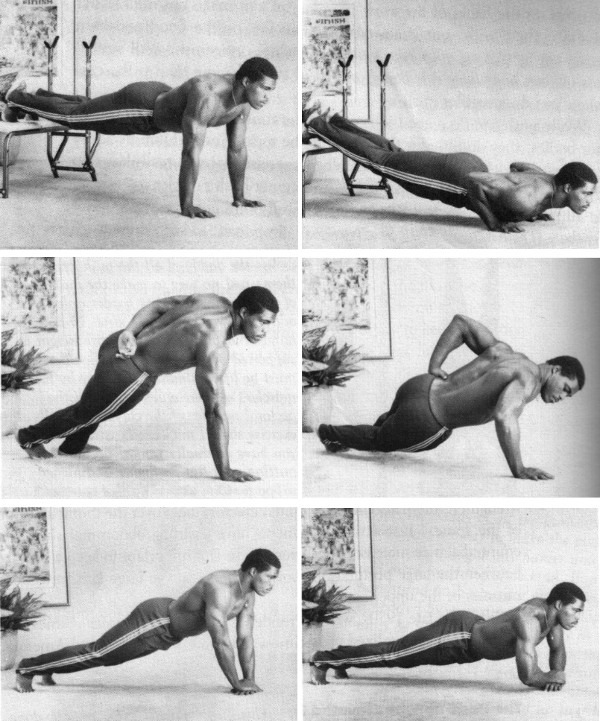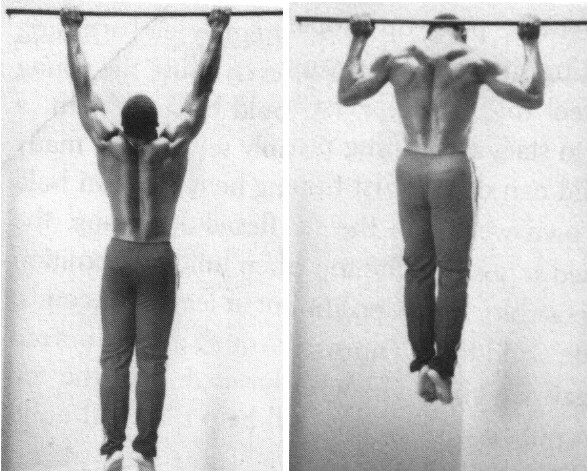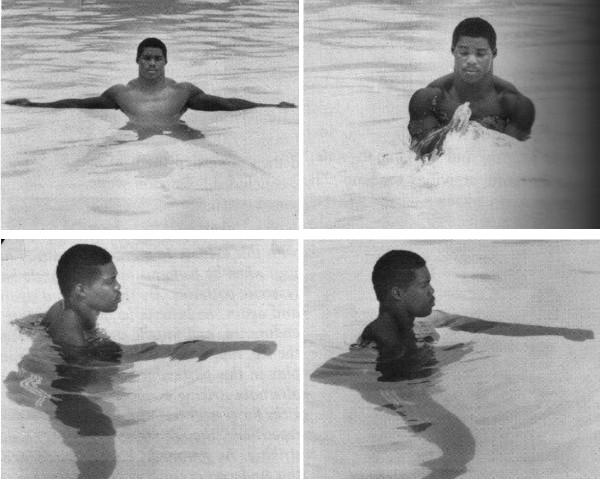Herschel Walker is an absolute beast. He is a retired football player, Olympic bobsledder, sprinter, mixed martial artist, ballet dancer, and political candidate. Walker currently serves as a co-chair of the President’s Council on Sports, Fitness, and Nutrition.
Herschel played college football for the University of Georgia, earned consensus All-American honors three times, and won the 1982 Heisman Trophy. Walker is considered one of the greatest college football players of all time.
Although Herschel Walker regularly tries his hands at new things, one thing has remained constant throughout his career – his shredded physique.
The most intriguing part about his physique? His training regimen only consists of bodyweight exercises. You heard it right. The guy does not lift weights. But, it is not that simple either. Walker’s training includes crazy volume, and he does up to 2,000-3,000 reps of a single exercise every day.
We would not blame you if you are thinking about getting yourself a gym membership after reading this.
Herschel Walker Stats
| Full Name | Herschel Junior Walker |
| D.O.B | March 3, 1962 |
| Age | 63 years |
| Height | 6’1″ (185 cm) |
| Weight | 225 lbs (102 kg) |
Herschel Walker Training Principles

Walker is a record holder in college track and field athletics, a 5th-degree black belter in taekwondo, and is training for MMA in his 50s. He certainly knows something about training for optimal physical performance that others do not.
Level Up Your Fitness: Join our 💪 strong community in Fitness Volt Newsletter. Get daily inspiration, expert-backed workouts, nutrition tips, the latest in strength sports, and the support you need to reach your goals. Subscribe for free!
It turns out Herschel Walker has laid out his physique secrets and unorthodox training principles in his now out-of-print book, Basic Training, that he wrote in the 80s.
Here are training principles Herschel swears by:
1. High Number of Repetitions
Starting from middle school to this day, Herschel Walker has done thousands of push-ups and sit-ups almost every day. To most lifters, performing 2,000-3,000 reps of a single bodyweight exercise might sound like too much effort for too little reward.
In the case of Walker, the high rep training regimen works wonders. Not only is he shredded to the bone, but he is also strong like a bull. Even though Walker did not pump iron in college, when his team did a bench press test, he pressed a mind-boggling 375 lbs (the most, his coach said, anyone had lifted on the BP at Georgia up until that time) and did 222 lbs (his body weight) for 24 reps.
Related: High Reps vs. Low Reps: Which Rep Scheme Is Best?
2. Variety
Herschel Walker did not confine himself to a single sport or physical activity. Why is that, you ask? We will let Walker explain this one.
“I think I developed as well as I did because I did so many different things — so many different kinds of exercise. I can’t prove it, but I think when you hear someone telling a young athlete to specialize and concentrate on only one sport you’re hearing someone give bad advice. variety is best…any kind of movement can help you learn about lots of other kinds of movement.
That’s why I do so many things myself and that’s why I believe all young people ought to do as many different sports and types of exercise as they can.”
3. Keep Things Fresh
Herschel considered himself a guinea pig. In his peak years, he wasn’t one for conventional advice. He enjoyed trying his own experiments and seeing what exercises worked well for him.
Walker created his own exercises and analyzed their efficacy based on how they made him feel and the result they garnered. The level of autonomy he enjoyed ensured that he remained curious and motivated throughout his career.
Must Read: How To Track Your Progress Like a Pro
4. Consistency is Key
From the day he started training while he was in school, Walker has hardly ever missed a training session. Consistency, Walker says, is like an investment in your body and mind.
Herschel Walker Workout Program
During his school days, Herschel was small and weak because of which he was constantly bullied and beaten up by his classmates. As a result, he often chose to stay inside during recess rather than going out to play.
After finishing sixth grade, Walker approached a track coach and told him he “wanted to get bigger and stronger and faster and be better at sports.”
As Walker remembers, the coach responded that “it was simple but I had to work hard at it. He said to do push-ups, sit-ups, and sprints. That’s all he said. But it was enough.”
And so, the Herschel Walker workout program was born.
Related: Build Your Program: How to Design the Perfect Training Plan
Herschel Walker Exercise Arsenal
Although Herschel followed a bodyweight-only training routine throughout his life, he started lifting weights a few years into his professional football career. But his affair with weights was short-lived, and he returned to a bodyweight-only program after his football days were over. He believes bodyweight exercises protect the joints and promote fitness longevity.
Also Read: Bodyweight Exercises To Avoid And What To Do Instead
1. Push-Up
Push-up is one of the first exercises anyone learns, and it was no different for Herschel. Being a chubby kid, Walker had his issues with push-ups. With practice and consistency, he slowly worked his way up to 25 reps by doing as many as he could in a single stretch, taking a 10-15 second break, and then pumping out more reps until he hit his goal.
Since this approach did wonders for him, Herschel Walker used it to reach the 50-rep mark, and then slowly increased his reps until he was doing 2,000 push-ups a day as a young man.
During college, on top of his track and football workouts, he reportedly did 300 push-ups every day. Fast forward to today, Herschel claims to do 3,500 push-ups every day.
Check Out: Godfather of Bodybuilding Charles Glass Shares A Push-Up Hack to Build Chest Muscles
Variations
Apart from the standard shoulder-width push-up, Walker incorporates the following push-up variations in his training:
- Decline Push-Up
- Single-Arm Push-Up
- Handstand Push-Up
- Diamond Push-Up
Walker likes to mix up different push-up variations in a single training session. He combines the harder variations with the orthodox to make workouts harder.
Herschel Walker’s Push-Up Routine
Level Up Your Fitness: Join our 💪 strong community in Fitness Volt Newsletter. Get daily inspiration, expert-backed workouts, nutrition tips, the latest in strength sports, and the support you need to reach your goals. Subscribe for free!
Yep, most lifters have a training routine, but Herschel being Herschel, has a push-up routine.
- Start with the standard push-ups, but go online halfway down. Walker believed that partial reps worked his triceps better, made him sweat, and helped increase his endurance. He did 150 partial reps. Walker uses the rest-pause training principle in every exercise and keeps going until he hits his target number of reps.
- After completing 150 reps, Herschel switches to a harder variation (one of the four mentioned above) for the next 10-20 reps.
- He then goes back to performing partial push-ups and repeats the cycle.
- He finishes his floor push-ups by performing standard push-ups super slowly.
- To top it off, Herschel concludes his push-up routine by doing handstand push-ups.
- He performs handstand push-ups in sets of ten with short rests in between sets until he hits his overall push-up rep goal.
For Pros: After Herschel Walker got married, he did additional two sets of 25 orthodox push-ups, with his wife sitting on his back.
Next Read: 13 Next Level Push-Up Variations For Mass, Strength, and Performance
2. Sit-Up
When Walker started training, he could hardly do 10 straight sit-ups. As he got more experienced, he started doing multiple sets of 10, with short rests between, until he reached a total of 50 reps.
Walker then multiplied his efforts and started doing 10-20 reps per set to reach the 100 rep mark. The reps snowballed from there, and he was eventually doing 3,000 reps, which is about as many as he does today.
Variations
Just like with push-ups, Herschel Walker did not limit himself to standard sit-ups. He hit his midsection from different angles to ensure overall development. Walker also included some lower ab and oblique exercises in the mix.
- Bent-Legged Sit-Up
- Straight-Legged Sit-Up
- Legs on a Chair
- Leg Raises
- Russian Twists
To strengthen his core, Walker also played basketball on days he did not play football. While playing ball, he focused on doing plenty of turnaround jumpers and layups and putting extra twists in the shots.
Next Read: 12 Crunches and Sit-Up Alternative That Will Give You A Shredded Midriff
3. Pull-Up/Chin-Up
During college, Walker did as many as 1,500 pull-ups every day. He switched between shoulder-width, neutral, supinated grips and behind-the-neck variations to target his back from different angles.
When he reached an advanced stage, he made the exercise harder by tying a weight plate around his body for added resistance. He also made one-armed pull-ups a part of his pull-up bar routine.
Related: One-Arm Pull-Up Guide: Muscles Worked, How to, Variations, Alternatives, and Tips
4. Running
Walker has been running since the day he got the life-altering advice from his track coach in the seventh grade. He believes that running is the most important skill for any athlete.
Growing up, Walker sprinted on hills. The resistance and challenge of the incline strengthened his lower body and worked wonders for his endurance. To make his sprints harder, he wore a weighted vest, held small dumbbells in each hand, or pulled a tire filled with 25-50 pound weights.
Check Out: Speed Training Plan: How to Run Faster
5. Taekwondo/MMA
Having been bullied as a boy, he took up taekwondo to learn to protect himself. Herschel sometimes spent an hour a day on his katas (form) in college. Today, he is a 5th-degree black belt in the martial art.
Taekwondo taught Walker discipline, balance, coordination, body control and awareness, timing, and flexibility. He also gained knowledge of how to hit through something and “when to explode on somebody.”
Next Read: Get Fighting Fit with This MMA-Inspired Workout Plan
6. Swimming/Water Work
We know what you are thinking, and yes, we agree. The guy is a machine.
Walker did not have access to a swimming pool growing up, but after college, he became an advocate for the benefits of water training.
Walker did not do laps in the pool but instead made up his own exercises like the “underwater power claps” and a modified breaststroke. He also practiced his taekwondo punches and kicks underwater.
Related: Deontay Wilder Workout and Diet Program
7. Other Exercises
While push-ups, chin-ups, sit-ups, and sprints were at the core of Herschel’s training, he did not limit himself to these movements. Other exercises that Walker incorporated in his workouts include:
- Monkey bars
- Rope climbing
- Stretching
- Plyometrics/Jumping drills
- Jump rope
- Squat thrusts
- Lunges – up to a 1,000 a day
- Squats – up to a 1,000 a day
- Dips – up to a 1,000 a day
Herschel Walker Diet Program
If you have been paying attention, you would know that Herschel does not believe in toeing the line, and that includes his diet. He neither eats breakfast nor lunch.
Herschel Walker believes in eating one meal a day (dinner) and sometimes fasts for several days. His diet usually consists of soup, bread, and salad. He does not eat red meat but occasionally has chicken with his meal.
Contrary to popular diet programs, Walker does believe in counting his macros. His reasoning?
Herschel Walker believes that if the “farm strong” men he grew up with did not feel the need to measure their protein intake, he should not bother with it either.
If you thought his diet was not up to mark, you are going to love his recovery program. Herschel sleeps for just five hours every night and wakes up at 5:30 a.m. every day to do his quota of sit-ups and push-ups.
Next Reads:
- Tom Brady Diet and Workout Plan For An NFL-Ready Physique
- Conor McGregor UFC Diet and Workout Program
- The Intermittent Fasting For Beginners
Conclusion
Growing up, Herschel Walker had a speech impediment, was short, chubby, slow, uncoordinated, lacked confidence and endurance. In brief, back then, no one would have bet their money on Walker achieving athletic greatness.
Walker’s training and diet program should also be a reminder that you do not need to fit into a rigid system. Find out what works for you, stick to it, and give it your 100%. The results will take care of themselves.













